Okonomiyaki
Okonomiyaki is a popular Japanese savory pancake cooked on a griddle, made with a batter based on flour, water, and shredded cabbage, combined with a variety of ingredients like meat, seafood, and vegetables. Two main styles are especially well-known: the Kansai style and the Hiroshima style, each with its unique preparation methods and flavors.
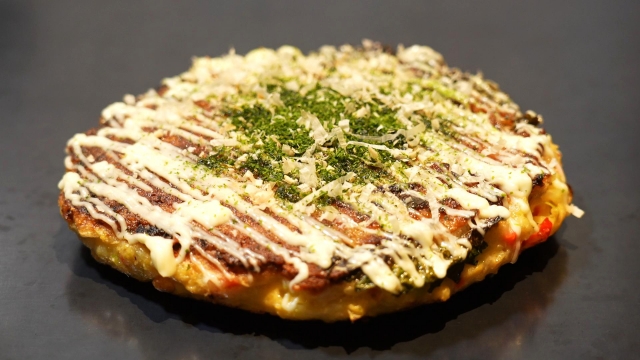
History of Okonomiyaki
The origins of okonomiyaki trace back to the Edo period, but the modern form emerged in post-war Kansai. Amid food shortages, it gained popularity as an inexpensive, hearty meal and spread throughout Japan.
Types of Okonomiyaki

Kansai-Style Okonomiyaki
- The ingredients are mixed into the batter before cooking.
- This is the most common style, found widely across many regions.
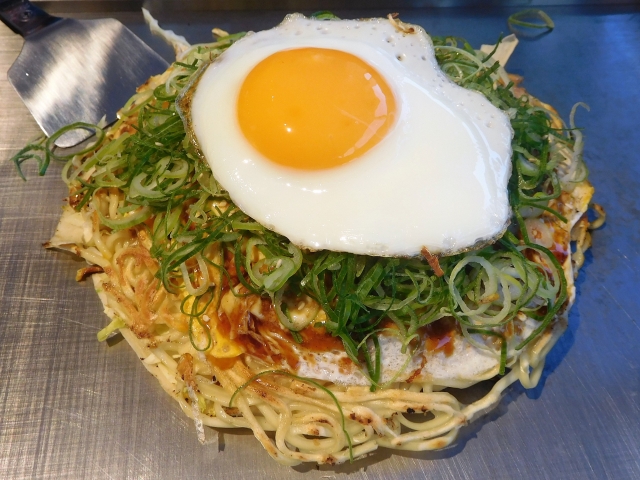
Hiroshima-Style Okonomiyaki
- The ingredients are layered rather than mixed.
- It often includes more cabbage and bean sprouts, with yakisoba or udon noodles added.
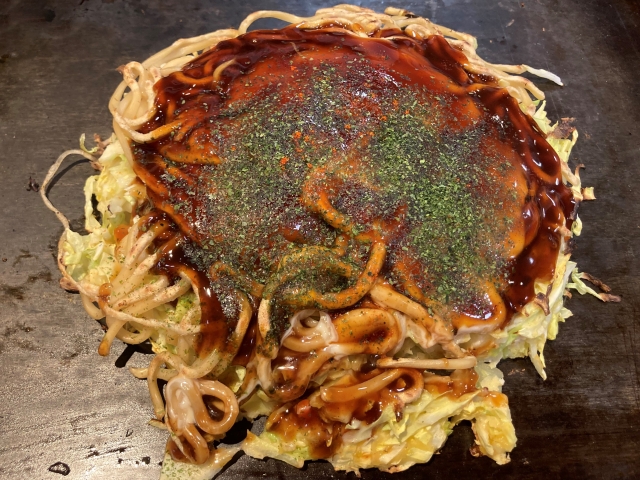
Modern-Yaki
- A variation of Kansai-style Okonomiyaki that includes yakisoba noodles.
- It’s hearty and popular, especially among younger people.
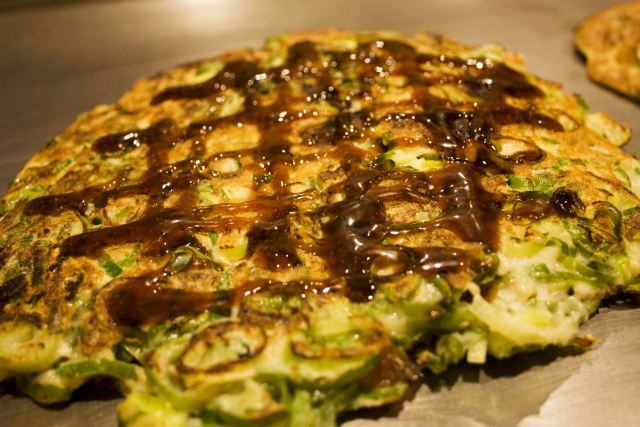
Negiyaki
- Made with a batter that includes a large amount of green onions.
- It’s lighter and typically served with soy sauce or ponzu.
Ingredients of Okonomiyaki
1. Basic Ingredients
- Cabbage: Forms the base of the dish, adding a crunchy texture.
- Pork: Usually thin slices of pork belly are used.
- Flour: The primary ingredient for the batter, mixed with water or dashi.
- Eggs: Used to bind the ingredients and add fluffiness.
2.Additional Ingredients
- Seafood: Squid, shrimp, and scallops add a rich umami flavor.
- Cheese: Can be mixed into the batter or used as a topping for a creamy taste.
- Bean Sprouts: Common in Hiroshima-style, adding a crispy texture.
- Yakisoba Noodles: Included in Modern-Yaki, enhancing the dish’s heartiness.
3.Toppings
- Okonomiyaki Sauce: A thick, sweet-savory sauce that defines the dish.
- Mayonnaise: Pairs well with the sauce for a creamy contrast.
- Aonori (Seaweed Flakes): Adds a subtle flavor and a hint of color.
- Bonito Flakes: Move in the heat, adding visual appeal.
These types and ingredients allow for a highly customizable and versatile dish, making it easy to create a version that suits personal tastes. Okonomiyaki is beloved not only for its flavor but also for the communal and interactive experience of cooking and eating it together with family and friends.
How to Make Okonomiyaki
Kansai-style Example
- Preparing the Batter: Mix flour, water, eggs, and dashi, then add shredded cabbage.
- Adding Ingredients: Incorporate desired ingredients like pork, squid, shrimp, and green onions into the batter.
- Cooking on the Griddle: Pour the batter onto a heated griddle and cook until both sides are golden brown.
- Toppings: Finish with okonomiyaki sauce, mayonnaise, aonori, and bonito flakes.
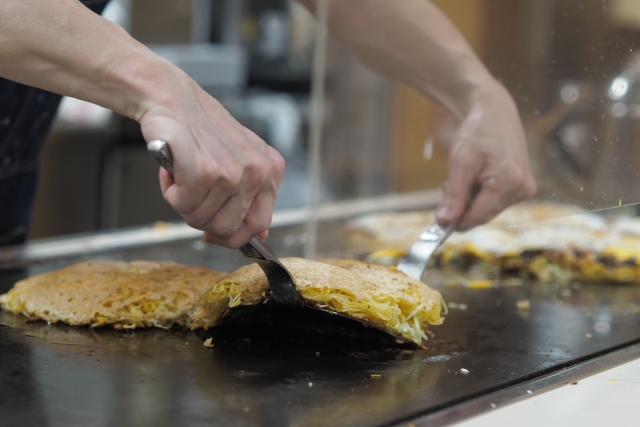
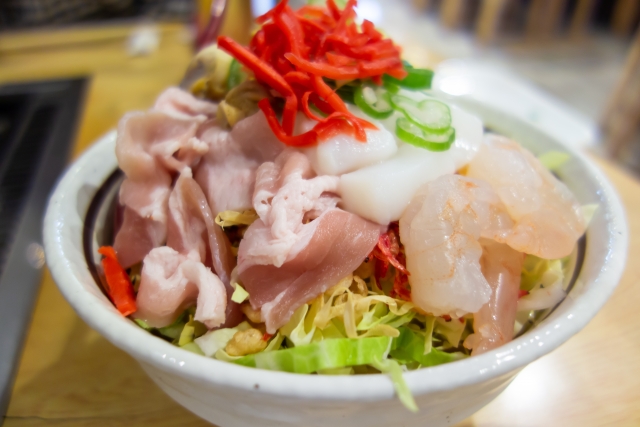
Nutritional Value and Health
Okonomiyaki is rich in dietary fiber and vitamin C due to the cabbage content. However, the use of sauce and mayonnaise can make it relatively high in calories. For a healthier version, increase vegetable portions or use low-fat sauces and mayonnaise.
Cultural Significance
Okonomiyaki is often enjoyed with family and friends around a griddle, fostering social interaction. Many okonomiyaki restaurants offer a DIY style where diners can customize their pancakes. Its versatility and accessibility have led to regional variations and increased popularity both in Japan and internationally.
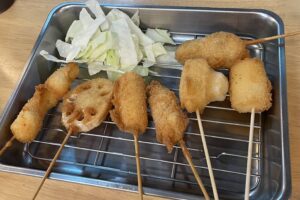
Comments